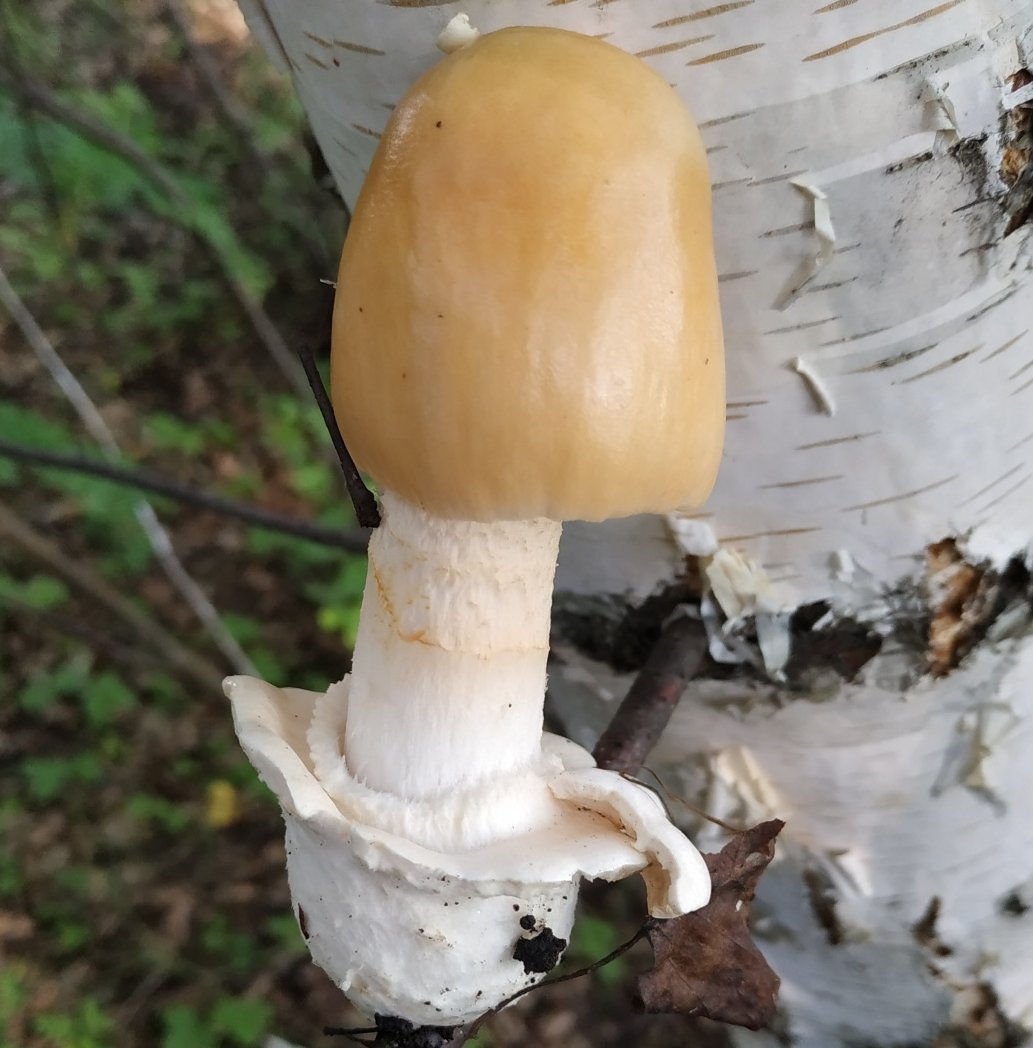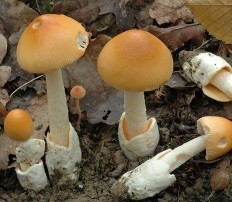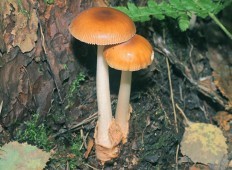Hevitra ato Anatiny
Yellowing float (Amanita flavescens)
- Diviziona: Basidiomycota (Basidiomycetes)
- Fizarana: Agaricomycotina (Agaricomycetes)
- Kilasy: Agaricomycetes (Agaricomycetes)
- Kilasy: Agaricomycetidae (Agaricomycetes)
- Karazana: Agaricales (Agarika na Lamellar)
- Fianakaviana: Amanitaceae (Amanitaceae)
- Genus: Amanita (Amanita)
- Type: Amanita flavescens (yellow float)
:
- Amanitopsis vaginata var. flavescens
- Amanita vaginata var. flavescens
- Amanita contui
- False Saffron Ringless Amanita
- False float saffron

Like all amanite, the Yellowing Float is born from an “egg”, a kind of common coverlet, which is torn during the growth of the fungus and remains at the base of the stem in the form of a “pouch”, a volva.
In English-speaking countries, there is a name “False Saffron Ringless Amanita” – “False saffron fly agaric”, “False saffron float”. Apparently, this is due to the fact that the saffron float is much more common than the yellowing one, and is better known.
lohany: ovoid when young, then opens to bell-shaped, convex, prostrate, often retaining a tubercle in the center. The surface of the cap is radially striated by 20-70%, the grooves are more pronounced towards the edge of the cap – these are the plates that shine through the thin pulp. Dry, matte. Remains of the common veil may be present (but by no means always) in the form of small whitish spots. The skin color of the cap in young specimens is light, pale yellow, with age the skin becomes light yellow or orange-cream, cream-pink, between beige and orange-cream. Wounds tend to have a yellowish discoloration.
The flesh of the cap is very thin, especially towards the edge, fragile.
takelaka: free, frequent, wide, with numerous plates of different lengths. White to pale orange-cream, unevenly colored, darker towards the edge.
leg: 75–120 x 9–13 mm, white, cylindrical or slightly tapering at the top. Whitish, with an indistinct velvety pattern in the form of belts and zigzags, creamy, light straw yellow or pale ocher in color.
Ring: tsy hita.
Volvo: loose (attached only to the base of the leg), baggy, white. Unevenly torn, has from two to four petals sometimes of very different heights, Outside white, clean, without rusty spots. The inner side is light, almost white, whitish, with a yellowish tinge.

vovoka spora: fotsy.
disadisa: (8,4-) 89,0-12,6 (-17,6) x (7,4-) 8,0-10,6 (-14,1) µm, globus or subglobose, widely ellipsoidal (uncommon) ), ellipsoid, non-amyloid.
Basidia without clamps at bases.
Andramo sy fofona: Tsy misy tsiro na fofona manokana.
Probably forms mycorrhiza with birch. Grows on soil.
The yellowing float abundantly bears fruit from June to October (November with warm autumn). It is widely distributed both in Europe and in Asia, in countries with a temperate and cool climate.
The mushroom is edible after boiling, like all floats. Reviews about taste are very different, but taste is a very individual matter.

Saffron float (Amanita crocea)
It has a well-defined, obvious moire pattern on a darker, “saffron” color stem. The cap is more brightly colored, although this is an unreliable macro feature given the potential for fading. A more reliable distinguishing feature is the color of the inside of the Volvo, in the saffron float it is dark, saffron.

mitsingevana mavo-volontsôkôlà (Amanita fulva)
It has a darker, richer, orange-brown cap, and this is also an unreliable sign. The outer side of the Volvo at the yellow-brown float is covered with fairly well distinguishable “rusty” spots. This sign is considered more reliable, so do not be lazy to carefully dig out the Volvo and examine it.
The article uses photos from questions in recognition, authors: Ilya, Marina, Sanya.









